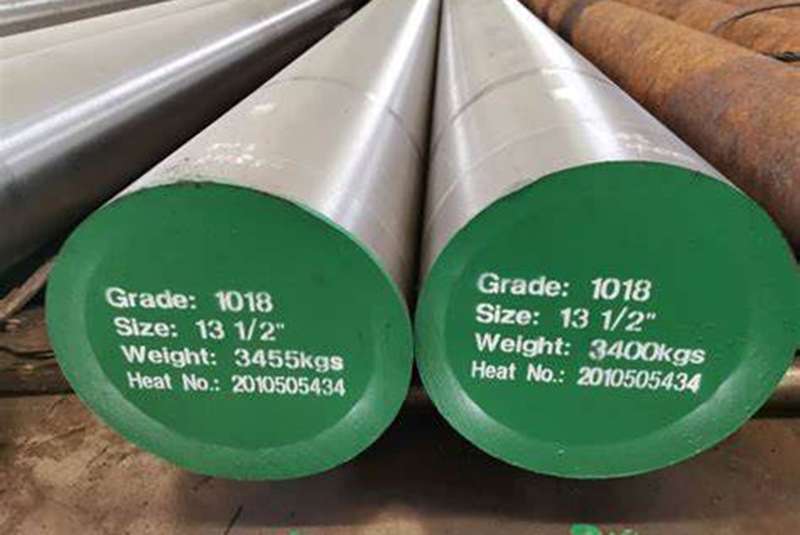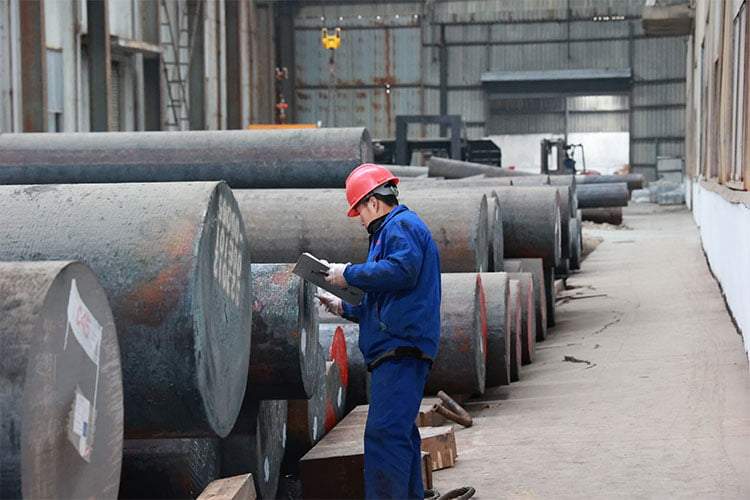Welcome to My Blog!
Before we dive into the content, I’d love for you to join me on my social media platforms where I share more insights, engage with the community, and post updates. Here’s how you can connect with me:
Facebook:https://www.facebook.com/profile.php?id=100085401406977
LinkedIn:https://www.linkedin.com/showcase/102680001/admin/dashboard/
Now, let’s get started on our journey together. I hope you find the content here insightful, engaging, and valuable.
Introduction
When it comes to selecting materials for various industrial and manufacturing applications, 1018 steel is a popular choice due to its balanced mechanical properties, ease of fabrication, and versatility. Understanding 1018 steel properties is essential for engineers, manufacturers, and designers who need a reliable, cost-effective material that meets specific performance criteria. This comprehensive overview delves into the key characteristics of 1018 steel, its benefits, limitations, common applications, and more.
What is 1018 Steel?

Composition and Classification
1018 steel is a low-carbon steel with a carbon content of approximately 0.18%. It is classified as a mild steel, which means it has relatively low carbon content compared to medium or high-carbon steels. The alloy primarily consists of iron, with small amounts of manganese, phosphorus, and sulfur, which contribute to its mechanical properties and machinability.
Chemical Composition of 1018 Steel:
- Carbon: 0.15% – 0.20%
- Manganese: 0.60% – 0.90%
- Phosphorus: 0.04% (maximum)
- Sulfur: 0.05% (maximum)
- Iron: Balance
Key 1018 Steel Properties
Understanding 1018 steel properties is crucial for determining its suitability for various applications. The material is known for its excellent machinability, weldability, and balanced strength. Here are the key properties:
- Tensile Strength: 440 MPa (64,000 psi)
- Yield Strength: 370 MPa (54,000 psi)
- Elongation at Break: 15% – 25%
- Brinell Hardness: 126
- Density: 7.87 g/cm³
- Modulus of Elasticity: 205 GPa (29,700 ksi)
Advantages of 1018 Steel Properties
1. Excellent Machinability
One of the primary advantages of 1018 steel properties is its excellent machinability. The low carbon content allows for easy cutting, drilling, and forming, making it ideal for complex manufacturing processes that require precision. This machinability reduces tooling wear and increases production efficiency, which is particularly beneficial in high-volume manufacturing environments.
2. Superior Weldability
1018 steel properties also include superior weldability, allowing it to be easily joined with other materials using standard welding techniques. The steel’s low carbon content minimizes the risk of cracking and other issues that can arise during the welding process, making it suitable for structural applications where strong, reliable welds are essential.
3. Versatile Applications
The balanced mechanical properties of 1018 steel make it suitable for a wide range of applications. It is commonly used in the manufacturing of automotive components, machinery parts, gears, and shafts. Its versatility extends to both cold and hot working processes, further enhancing its utility across different industries.
4. Cost-Effectiveness
1018 steel offers a cost-effective solution for many industrial applications. Its low material cost, combined with its machinability and weldability, reduces overall production expenses. This affordability makes it a preferred choice for both small-scale projects and large manufacturing operations.
5. Heat Treatment Capabilities
While 1018 steel is typically used in its as-rolled condition, it can also be heat-treated to improve certain properties. Processes such as carburizing, annealing, and case hardening can enhance the surface hardness and wear resistance of 1018 steel, expanding its range of potential applications.
Limitations of 1018 Steel Properties
1. Limited Strength Compared to Higher Carbon Steels
While 1018 steel provides balanced strength, it falls short in comparison to higher carbon steels like 1045 or 4140. For applications requiring higher tensile and yield strength, alternative materials may be more suitable.
2. Lower Wear Resistance
1018 steel has relatively low wear resistance compared to alloy steels or higher carbon steels. This limitation can be addressed through surface treatments or selecting a different material for high-wear applications.
3. Susceptibility to Corrosion
1018 steel is not inherently corrosion-resistant. In environments where corrosion is a concern, protective coatings or treatments such as galvanizing or painting are necessary to prevent rust and degradation.
Common Applications of 1018 Steel
Automotive Industry
1018 steel is widely used in the automotive industry for manufacturing components such as shafts, gears, and pins. Its machinability and weldability make it ideal for producing parts that require precision and durability.
Machinery and Equipment
In machinery manufacturing, 1018 steel is commonly used for producing mechanical components, including spindles, couplings, and axles. The steel’s ability to undergo heat treatment also makes it suitable for parts that require enhanced surface hardness.
Structural Applications
Due to its good weldability and moderate strength, 1018 steel is used in various structural applications, including the construction of frames, brackets, and supports. Its ease of fabrication allows for the creation of custom structural components.
Consumer Goods
1018 steel is also found in the production of consumer goods, such as hand tools, kitchen utensils, and hardware. Its versatility and affordability make it a popular choice for mass production of everyday items.
Comparison Table: 1018 Steel vs. Other Carbon Steels

| Property | 1018 Steel | 1045 Steel | 4140 Steel |
|---|---|---|---|
| Carbon Content | 0.18% | 0.45% | 0.40% – 0.42% |
| Tensile Strength | 440 MPa (64,000 psi) | 585 MPa (85,000 psi) | 655 MPa (95,000 psi) |
| Yield Strength | 370 MPa (54,000 psi) | 450 MPa (65,000 psi) | 415 MPa (60,000 psi) |
| Brinell Hardness | 126 | 170 – 210 | 197 – 237 |
| Weldability | Excellent | Good | Moderate |
| Machinability | Excellent | Good | Fair |
| Corrosion Resistance | Low | Low | Moderate |
| Heat Treatment | Limited | Good | Excellent |
Conclusion
1018 steel properties make it a versatile and cost-effective material for a wide range of applications across various industries. Its excellent machinability, superior weldability, and ability to undergo heat treatment enhance its appeal for manufacturing and structural uses. While it has limitations in terms of strength and wear resistance, 1018 steel remains a reliable choice for projects where these factors are not critical. Understanding the properties of 1018 steel allows engineers and manufacturers to make informed decisions, ensuring that the material meets the specific needs of their applications.
FAQ
What are the primary 1018 steel properties?
The primary 1018 steel properties include low carbon content, excellent machinability, good weldability, balanced tensile and yield strength, and moderate hardness. It is often used for applications where precision and ease of fabrication are crucial.
2How does the low carbon content affect 1018 steel properties?
The low carbon content in 1018 steel results in lower tensile and yield strength compared to higher carbon steels. However, it enhances machinability and weldability, making it suitable for applications requiring precision and ease of fabrication.
What is the tensile strength of 1018 steel?
The tensile strength of 1018 steel is approximately 440 MPa (64,000 psi). This strength is sufficient for many structural and manufacturing applications, though higher-strength materials may be required for more demanding uses.
Can 1018 steel be heat-treated to improve its properties?
Yes, 1018 steel can be heat-treated to enhance its properties. Processes such as carburizing and annealing can increase surface hardness and wear resistance, making the steel more suitable for specific applications.
What is the machinability rating of 1018 steel?
1018 steel is known for its excellent machinability. Its low carbon content allows for easy cutting, drilling, and forming, which is beneficial for high-volume manufacturing processes and precision parts.
How does 1018 steel compare to 1045 steel in terms of properties?
Compared to 1045 steel, 1018 steel has lower tensile strength and hardness but offers better machinability and weldability. 1045 steel, with higher carbon content, provides greater strength and wear resistance.
What are the common applications of 1018 steel due to its properties?
1018 steel is commonly used in the automotive industry, machinery manufacturing, structural components, and consumer goods. Its properties make it ideal for components that require precision machining and welding.
Is 1018 steel resistant to corrosion?
1018 steel is not highly resistant to corrosion. In environments where corrosion is a concern, protective measures such as coating or painting are recommended to prevent rust and degradation.
What is the yield strength of 1018 steel?
The yield strength of 1018 steel is approximately 370 MPa (54,000 psi). This moderate strength makes it suitable for applications where high strength is not critical but precision and ease of fabrication are important.
How does 1018 steel’s Brinell hardness compare to other steels?
1018 steel has a Brinell hardness of approximately 126, which is lower than that of higher carbon or alloy steels. This lower hardness is offset by its excellent machinability and weldability, making it suitable for various manufacturing applications.
